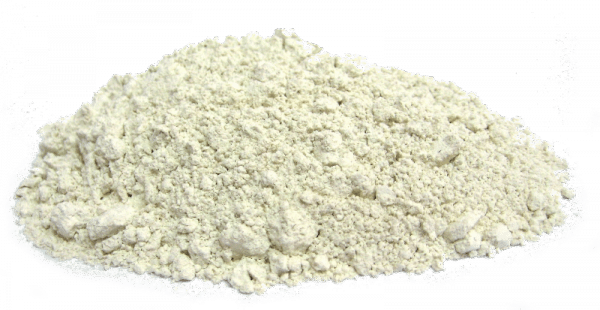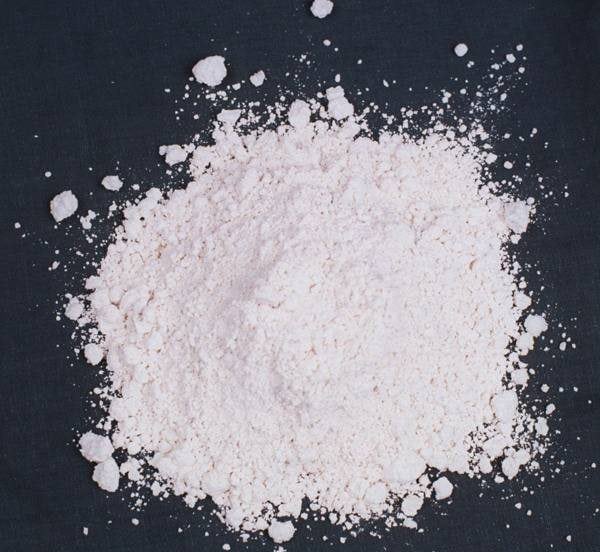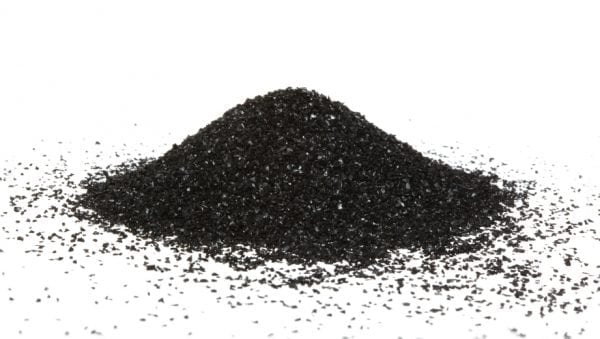Dry paints (also known as pigments) are specially prepared finely ground powders intended for dilution with binders. After mixing, a ready-to-use paint is obtained. Pigments are divided into mineral and artificial.
- Advantages and disadvantages of powder paints
- Types of paints
- White pigments
- Yellow pigments
- Blue pigments
- Red pigments
- Green pigments
- Brown pigments
- Black pigments
- Metallic pigments
- Solvents for dry paints
- Useful Tips

Advantages and disadvantages of powder paints
Pigments have a number of positive characteristics:
- wide selection of colors;
- lack of a sharp specific smell;
- vapor permeability and hygroscopicity;
- moisture resistance;
- ability to withstand alkaline compounds;
- the composition is not shallow;
- coatings painted with powder formulations are not subject to the negative effects of ultraviolet radiation;
- excellent hiding power, as a result of which paint is saved.
Note! The spreading rate is determined by the layer of composition necessary to completely cover the base surface (wall, concrete floor, wood, etc.).
However, the use of powder formulations is associated with certain difficulties, which should be known in advance. The fact is that not all pigments for paints compatible with any binders. For example, chalk and lime are not suitable for mixing with drying oil or oil. These substances can only be diluted with water, after which formulations similar to water-based paints and varnishes are formed.
Note! Water is an excellent solvent for most pigments.
The second point to keep in mind: dry pigments cannot be mixed with paints and varnishes. If such mixing is still allowed, the components cannot be fully mixed, which is why the solution will be inhomogeneous.
The mixture obtained in this way will not be able to paint the surface qualitatively, in particular, the amount of waste will increase sharply, the hiding power of the paint will decrease. In addition, unmixed properly paint will cause streaks and streaks on the surface even if an experienced specialist works.
To avoid lumps in the solution, you must first pour the dry mass into water, and after some time, thoroughly stir the contents of the container. Further, the solution is filtered through a fine mesh sieve. As an alternative to the situation, ordinary gauze, folded several times, can act. After filtration, the composition is poured with a thin stream into the paint. After adding diluted powder paint, the solution must be well mixed - this will ensure uniformity of the mixture.
Another difficulty in the application of dry paints is the need to use several pigmenting additives if you want to get a certain shade. Work requires skills and for beginners this operation is not always obtained the first time. In this regard, the use of finished paints and varnishes is much easier in terms of preparatory work.
to contents ↑Types of paints
There are many pigmenting substances, which are classified according to their color.
White pigments
White pigmenting elements include lime, white and chalk.
Lime is the most common coloring matter.Lime is diluted in ordinary water, stirring it to a milky state, after which the solution can be applied to the surface. For painting, slaked lime is usually used, which, if necessary, is mixed with pigmenting substances. Pigments are added only those that do not change their natural color due to mixing (for example, ocher, soot, red lead, chrome oxide). The solution is prepared on the basis of the following proportion: three quarters of water per quarter lime.
Chalk can have a yellow or gray tint and is offered for sale in one of two states - a hammer or large pieces. Both varieties are divided into 3 varieties. Fine chalk is suitable for painting. You can bring large-sized chalk to the desired condition on your own. To do this, add three times more water to one piece of chalk, and then thoroughly mix the solution and pass it through a sieve. Next, the mixture is poured into another container and infused. After the deposition of chalk, the water is drained, and the upper part of the sediment is removed for subsequent drying, crushing and sieving through a sieve.
Whitewash is a fine white powder mass produced by processing calcined metal components (zinc, carbon dioxide, titanium ore, lithopone). Whitewash is used in the manufacture of oil paints and coatings.
Hiding power indicators white (per square meter):
- titanium - 50-75 grams;
- lithoponic - 120 grams;
- lead - 200-300 grams.
to contents ↑Important! For putties and oil fillers, only dry chalk is used, which is previously sieved through a frequent sieve.
Yellow pigments
Yellow pigmenting substances include ocher and crowns.
Ocher is one of the most popular types of coloring matter among consumers. The color of ocher is always yellow, but several of its shades are possible, including gold. After calcination in a fire, ocher is called burnt, it acquires a red-brown color. Ocher is very resistant to environmental factors. The hiding power of the substance is from 65 to 90 grams per square meter.
Crones are paints made on the basis of lead or zinc. Moreover, lead powders are unsuitable for internal use due to their toxicity. The compositions have a variety of shades - from lemon to orange. The rate of coverage of crowns ranges from 110-190 grams per square meter.
to contents ↑Blue pigments
Blue pigments include azure and ultramarine.
Ultramarine (popular name - “blue”) is used as a supplement in the manufacture of chalk and lime whitewash. The task of ultramarine is to give the solution a slightly bluish tone. The approximate spreading rate of the paintwork material is 50 grams per square meter.
Azure is a substance that can only be used in enamel or oil paint. Azure is unstable to ultraviolet radiation - the surface darkens from bright light. Azure based paints also break down under the action of alkaline formulations. To enhance the color component, a little soot is added to the azure solution. The hiding power of the paint can range between 10 and 60 grams per square meter.
to contents ↑Red pigments
Substances that transmit surfaces to the red color include meerkats (lead and iron), cinnabar, and also the mummy.
Iron red lead - red brick color. Hiding power is approximately 20 grams per square meter of surface. Lead red lead is an orange-reddish coloring matter. Spreading rate - 100 grams per square meter.
Mummy - red paint, characterized by many possible shades. The mummy is very unstable to moisture, prone to change color under the influence of the external environment - from saturated dark red to brown. Hiding power of the material can vary from 30 to 60 grams per square meter.
Cinnabar is rich in shades of red.The substance is characterized by high resistance to acid and alkaline compounds, however, it changes color under the influence of ultraviolet radiation. Hiding power - 80-120 grams per square meter.
to contents ↑Green pigments
Green powder paints include chrome greens and lead greens.
Chrome green (chromium oxide) is a mixture of yellow crowns with azure. When changing the proportions of azure in the composition, you can achieve a given hue. Spreading rate of paint - 40 grams per square meter.
Lead greens are also a mixture of blue and yellow components, including crowns and azure. The spreading rate can range from 28-70 grams per square meter.
to contents ↑Brown pigments
A brown color is given by umber and burnt siena.
Umbra is a brown coloring matter with several kinds of shades. As a result of firing, the umber acquires a red-brown tone. The average spreading rate of the material is 40 grams per square meter.
Burnt sienna is similar in its characteristics to ocher. It is often used to give decorative properties to wood, for example, when it is necessary to paint the surface under oak or ash. The lack of material - hiding power below the average level.
to contents ↑Black pigments
Manganese peroxide, carbon black, graphite and charcoal transmit black surfaces.
Soot is a black substance - a by-product of combustion in the oil and gas industry. Soot can only be added to oil, glue or soap formulations. Spreading rate of the solution is 15 grams per square meter.
Manganese peroxide goes well with water. Hiding power - 40 grams per square meter.
Graphite and charcoal are grinded and sieved through a sieve before use.
Next, the resulting powder is added to water, resulting in a coloring material. The rate of coverage for paints based on graphite and charcoal is 30 grams per square meter.
to contents ↑Metallic pigments
Metallic pigments include zinc, bronze and aluminum powders. Bronze and aluminum are usually used for painting metal products (for example, in airbrushing), as well as to give the coating a metallic look. The opacity of metal pigments is from 3 to 4 grams per square meter.
Solvents for dry paints
Certain types of powders can be used in any solutions. Universal pigments include:
- soot;
- manganese peroxide;
- cinnabar;
- mummy;
- ultramarine;
- iron minium;
- sienna;
- umber;
- ocher;
- chrome oxide.
Other components are used together with emulsion and adhesive compositions, and lime and chalk - only in water.
to contents ↑Useful Tips
- When working with dry paints, it is important to observe the temperature regime. The optimum temperature should be in the range of 5 and 25 degrees Celsius above zero.
- Dry paints must be grinded so that the entire mass penetrates through the openings of the sieve. The fineness of grinding directly affects the production of high-quality paint.
- The coloring composition can be applied with any tools - brush, roller or spray. However, the final choice depends not so much on the wishes of the master, but on paint viscosity and type of surface to be painted.
- It is not necessary to apply paint in thick layers to avoid sagging.
- If necessary, you can take a break for up to 24 hours without completing the full painting of the surface. If you continue to work within the deadline, quality loss will not occur.
- It is recommended to use a drill or mixer to stir the solution. Stirring the composition manually is a rather time-consuming process.
- When the paint dissolves in water, you need to wait for 10 minutes until the solution is infused.Further, the composition is mixed again, after which it is possible to begin applying the coloring matter.
- Before painting the surface with your own hands, it is necessary to prepare it in advance - remove irregularities, apply primers and plaster.
The preparation of pigment-based coloring solutions is a simple process, but requires experience and labor. Otherwise, dry powder paints are not much different from conventional paints and varnishes and are widely used both at home and for industrial purposes.














